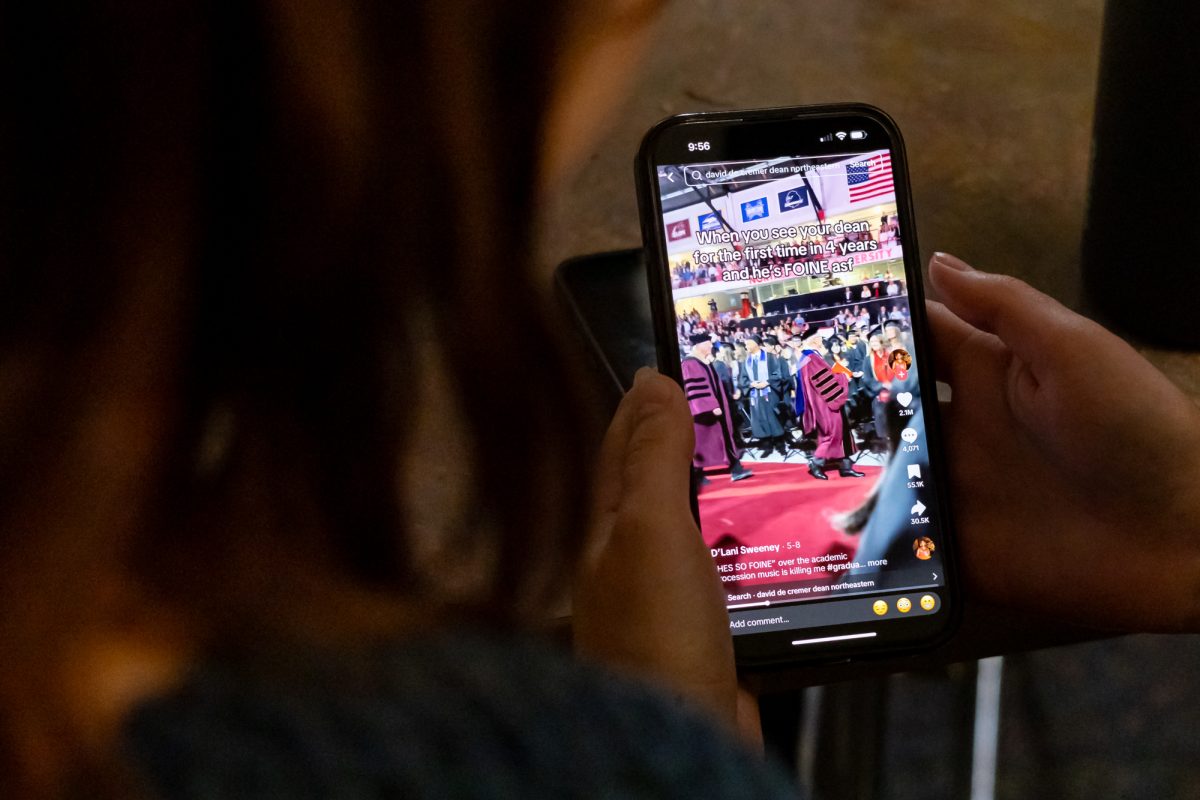By Melissa Danzo, News Staff
Sixty years after the original publication of Ralph Ellison’s “Invisible Man,” audience members poured into the Boston University Theatre with one question on their minds: “How is this story still relevant?”
For those not familiar with Ellison’s seminal 1952 work of fiction, “Invisible Man” is considered by many to be the first post-modern novel and one of the great American novels of the 20th century.
Navigating between styles of realism and a surrealism, Ellison captures the zeitgeist of the mid-20th century. Amid a backdrop of extreme racism and the burgeoning cult of communism in Harlem, New York, a young African American man struggles with identity conflict in a society that is forcing him to pick a side, or at least a movement to align with.
This overarching struggle of self-discovery is part of what makes Ellison’s work so enduring. Oren Jacoby, the adaptor of “Invisible Man” who took the novel from printed work to the stage, worked with the utmost care in relaying the original motifs of the novel. Whereas some in his position would take this opportunity to put their own artistic spin on the author’s work, Jacoby opted to, instead, literally execute Ellison’s vision. The script is composed completely of dialogue penned by Ellison himself. Passages that, in the novel, occur in the mind of the narrator, the nameless Invisible Man, delivers via Shakespeare-esque soliloquy. The opening and closing lines are identical to those of the novel.
That is not to say Jacoby’s adaptation is made up of dry delivery. Thanks in part to the work of director Christopher McElroen, this three hour performance is enrapturing through and through. With striking sets and thoughtful musical selections, Ellison’s words are brought to life in a transportative way. The most visually dramatic set, developed by set designer Troy Hourie, is that which opens and closes the production – the Invisible Man’s basement home lit by 1,369 light bulbs. The execution of this set is true to the novel, which describes the Invisible Man’s room as a “hole” that is “warm and full of light.” One is hard-pressed to imagine “a brighter spot in all New York.
Just as Ellison employed light and darkness as dramatic motifs to aid in the telling of his story, light is equally as important in the staging. In one memorable scene of the final act, light floods the audience as they are addressed directly by the protagonist. In this moment viewers are suddenly vulnerable; the audience is no longer provided with the security of being simple onlookers to the action. This avant-garde breaking of the fourth wall elicits a similar reaction to that which readers experience with Ellison’s words. They are forced out of the darkness and into the light and forced to self-examine in a manner prevalent throughout both novel and play.
Strong production values are matched by a strong cast of 10, headed by Teagle F. Bougere in the role of the nameless Invisible Man. As the central figure all three hours of performance, it is not a sprint, but a marathon for Bougere. His transformation from idealistic scholar, to civil society leader, to basement-dwelling degenerate is simultaneously heartwrenching and relatable. The care with which Bougere took in his portrayal of the well-spoken, bright youth.
The Invisible Man is a very complex and difficult character to play, though Bougere’s ability to personally identify with the struggles of the character did lend to his success on stage. In an interview with the Boston Globe, Bougere stated that he could relate to the feeling of invisibility that plagues the protagonist, proving that Ellison’s original message has not dissipated with time.
McElroen, in early stages of the production, made a point of discussing with his cast what Ellison sought to communicate through the motif of “invisibility.” McElroen told the Globe that he forced the players to delve into their pasts and identify times that they felt invisible. Invisibility can be a result of racial discrimination, typecasting or simply being ignored. In this respect, human nature inherently creates this condition, rendering the story of the “Invisible Man” timeless.
Printed above the stage in the 800-seat Boston University Theatre is the phrase, “To hold as ‘twere the mirror up to nature.” This notion of theatre as a reflection of life has been successfully executed by the Huntington Theatre Company in their production of “Invisible Man.”








